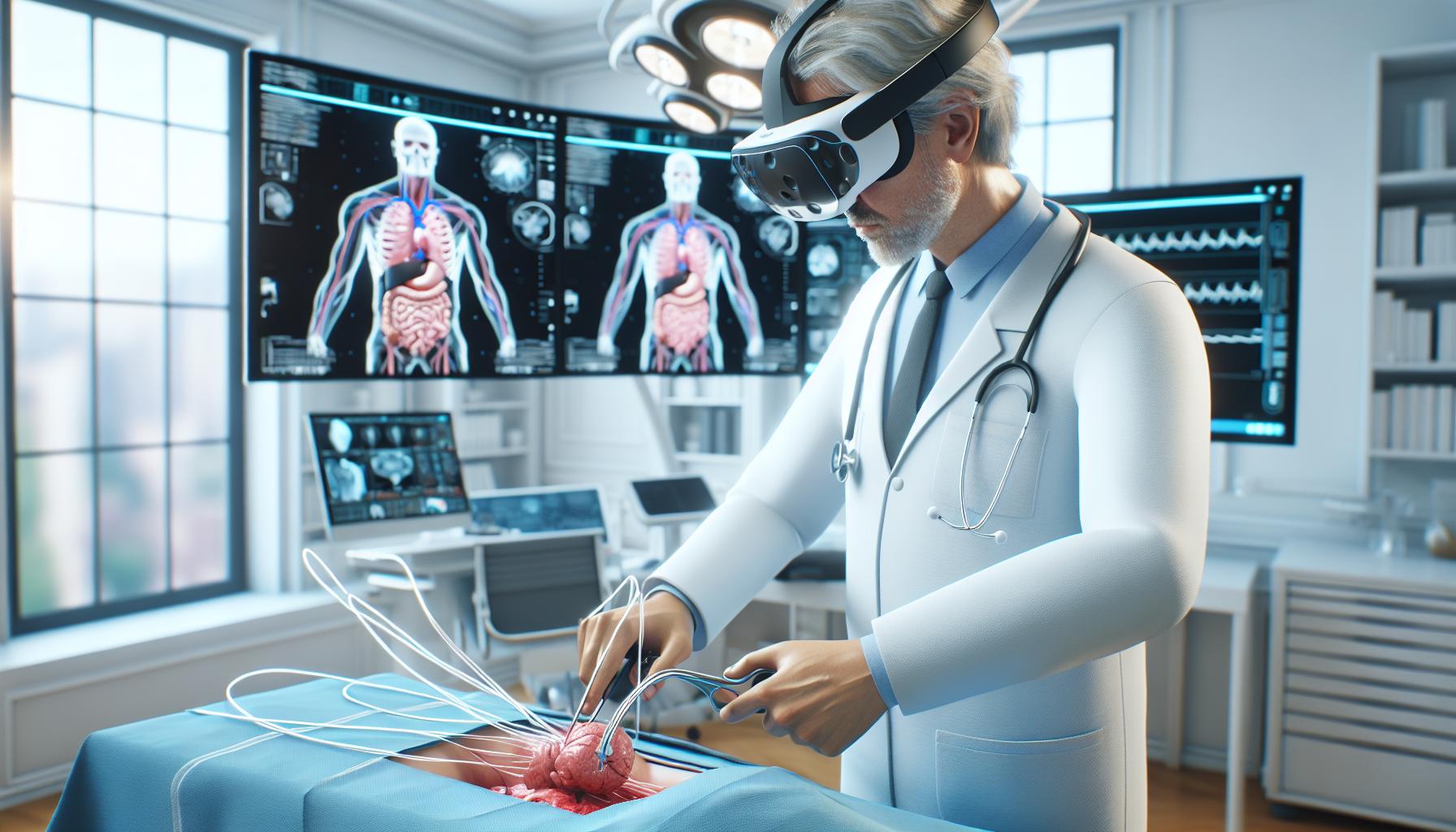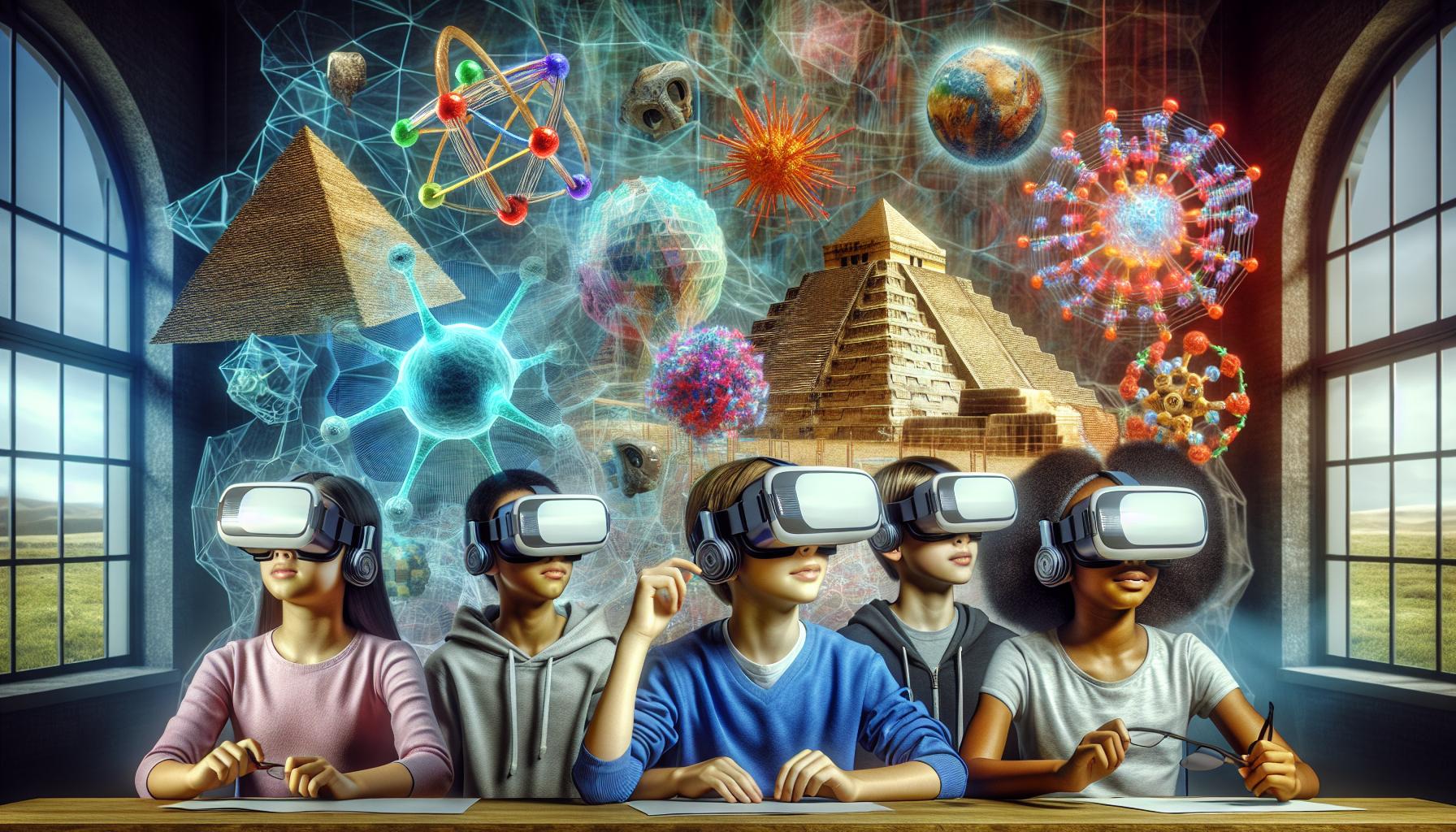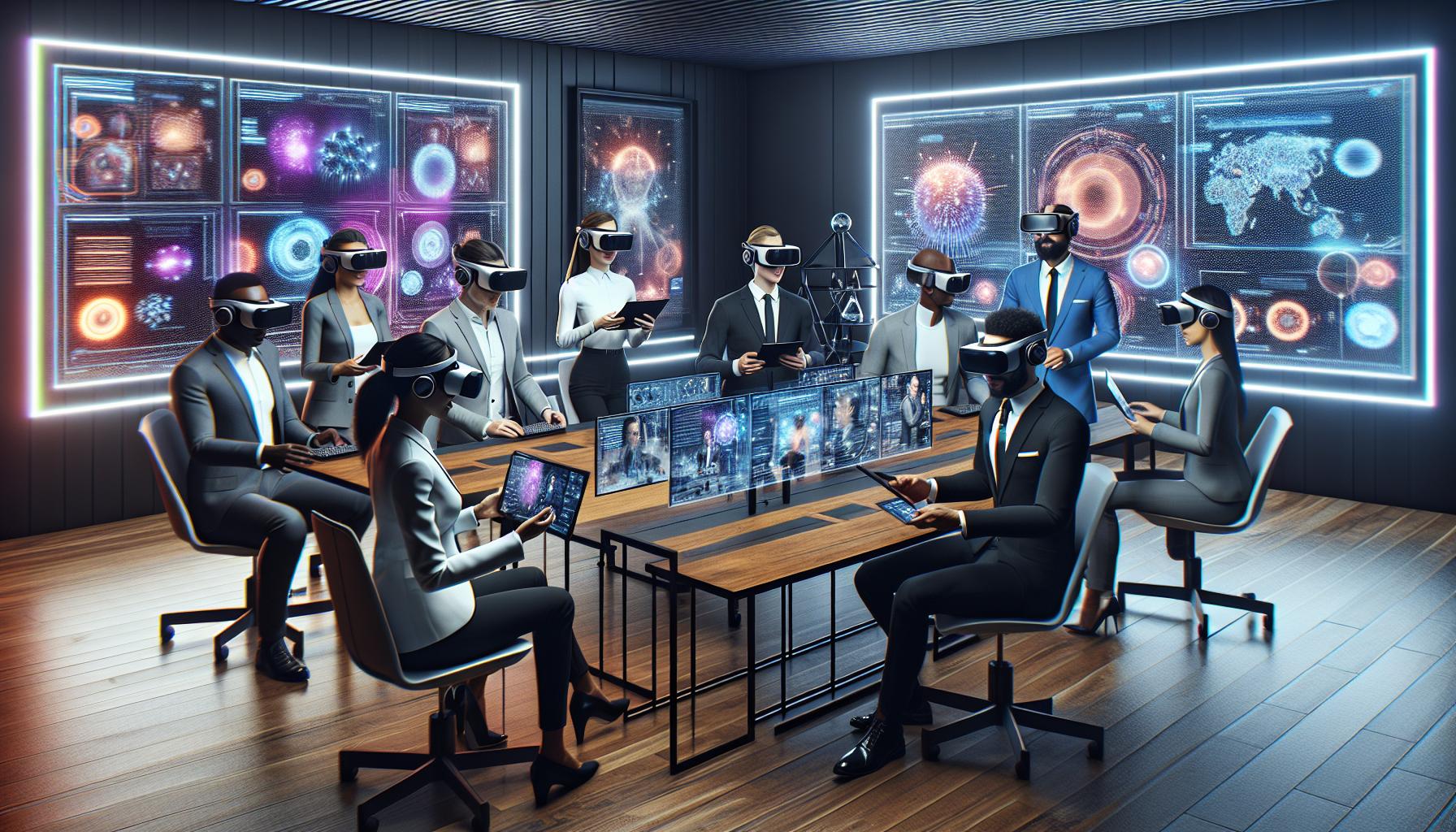Virtual reality has transformed from science fiction fantasy into a mind-blowing reality that’s revolutionizing how people work learn and play. This immersive technology doesn’t just transport users to digital wonderlands – it’s reshaping industries and creating unprecedented opportunities across education healthcare entertainment and beyond.
From surgeons practicing complex procedures to students exploring ancient civilizations VR opens doors to experiences that were previously impossible. The technology’s ability to create realistic 3D environments has made it an invaluable tool for training simulation and therapeutic applications. It’s not just about gaming anymore – though let’s be honest who wouldn’t want to battle dragons from their living room?
What Are the Benefits of Virtual Reality
Virtual reality technology creates computer-generated environments that simulate physical presence in real or imagined worlds. The technology combines hardware and software components to deliver immersive experiences through sensory stimulation.
Key Components of VR Systems
A VR system integrates several essential hardware elements to create immersive experiences:
- Head-Mounted Displays (HMDs): Wearable devices with high-resolution displays provide stereoscopic 3D visuals directly to users’ eyes
- Motion Controllers: Hand-held devices track user movements to enable interaction with virtual objects
- Tracking Sensors: External or internal sensors monitor head position orientation body movements in real-time
- Processing Units: Powerful computers or dedicated processors render complex graphics maintain low latency
- Audio Systems: Spatial audio technology delivers directional sound cues enhancing immersion
- Haptic Feedback Devices: Tactile feedback mechanisms simulate physical sensations through vibrations pressure points
- Motion Tracking: Sensors capture user movements including head position hand gestures body orientation
- Image Processing: Graphics processing units render separate images for each eye at high frame rates
- Stereoscopic Display: Two slightly offset images create depth perception through binocular vision
- Latency Management: Systems minimize delay between user actions virtual environment responses
- Sensory Integration: Multiple sensory inputs combine to create presence in virtual spaces:
- Visual updates respond to head movement
- Audio adjusts based on position orientation
- Haptic feedback synchronizes with virtual interactions
- Motion controllers translate physical actions into virtual commands
Medical and Healthcare Benefits

Virtual reality transforms healthcare delivery through immersive training environments and innovative therapeutic solutions. VR applications in medicine enhance patient care quality while reducing risks and costs associated with traditional medical practices.
Surgical Training Applications
VR surgical simulators provide medical students with risk-free environments to practice complex procedures. Surgeons gain hands-on experience performing intricate operations without endangering patients. These digital platforms replicate authentic surgical scenarios including emergency complications cardiac procedures laparoscopic techniques. Medical institutions report a 40% improvement in surgical precision when residents train using VR systems. The technology enables real-time feedback performance metrics detailed anatomical visualization multiple practice attempts. Leading medical centers incorporate VR training modules for specialized procedures such as neurosurgery transplant operations robotic surgery.
Mental Health Treatment
VR exposure therapy effectively treats anxiety disorders phobias PTSD. Patients confront fear-inducing situations in controlled virtual environments with therapist guidance. Clinical studies demonstrate 70% success rates using VR for treating specific phobias. The technology creates customizable scenarios for gradual exposure: heights public speaking crowded spaces social interactions. Therapists monitor patient responses adjust intensity levels track progress in real-time. VR-based cognitive behavioral therapy sessions integrate biofeedback mechanisms relaxation techniques coping strategies. Treatment programs show reduced dropout rates increased patient engagement improved long-term outcomes compared to traditional methods.
Educational Advantages

Virtual reality transforms traditional education by creating interactive digital environments that enhance learning outcomes. Research indicates VR-based learning increases student engagement by 85% compared to conventional methods.
Immersive Learning Experiences
VR education platforms transport students into historically accurate reconstructions of ancient civilizations from Ancient Rome to the Mayan Empire. Students explore complex molecular structures in 3D space while manipulating atomic bonds in chemistry lessons. Virtual field trips take classes to remote locations such as the Great Barrier Reef or the surface of Mars without leaving the classroom. Interactive simulations demonstrate abstract concepts in physics such as electromagnetic fields or quantum mechanics through visual representation.
Practical Skills Development
VR training programs enable hands-on practice of technical procedures in risk-free environments. Medical students perform virtual dissections with detailed anatomical models offering 360-degree views of body systems. Engineering students assemble virtual machines while receiving real-time feedback on their techniques. Language learners engage in conversations with AI-powered native speakers in culturally authentic virtual environments. Data shows VR-trained professionals complete tasks 40% faster than those using traditional training methods.
Business and Professional Benefits

Virtual reality transforms business operations through immersive digital solutions that enhance productivity and reduce operational costs. VR technology creates new opportunities for remote work collaboration while providing cost-effective training solutions across industries.
Virtual Meetings and Collaboration
Virtual reality elevates remote collaboration by creating shared virtual workspaces where team members interact as if physically present. Teams use VR platforms to manipulate 3D models collaboratively, enabling real-time design reviews and project modifications. International businesses reduce travel expenses by 60% through VR meetings that facilitate natural conversations and nonverbal communication. Architects showcase building designs to clients in virtual walkthroughs while product developers conduct virtual prototyping sessions with global teams. The technology supports multiple participants in the same virtual space with spatial audio features creating directional sound based on avatar positions.
Training and Development Solutions
VR training programs deliver immersive learning experiences that accelerate skill development across various industries. Manufacturing employees master complex assembly procedures through repetitive practice in virtual environments, resulting in a 40% reduction in training time. Corporate onboarding programs utilize VR simulations to familiarize new hires with workplace protocols and safety procedures. Sales teams practice customer interactions through AI-powered virtual scenarios that improve conversion rates by 25%. The technology enables consistent training delivery across multiple locations while tracking individual performance metrics through detailed analytics. Industries such as aviation aerospace healthcare use VR simulators to train professionals in high-stakes procedures without real-world risks.
Entertainment and Gaming Applications
Virtual reality transforms entertainment by creating immersive digital environments that engage users in unprecedented ways. The technology enables interactive experiences that blur the lines between digital content and reality.
Immersive Gaming Experiences
VR gaming introduces players to three-dimensional worlds with 360-degree viewing angles and intuitive motion controls. Modern VR headsets deliver high-resolution graphics at 90 frames per second, creating seamless visual experiences. Games like “Half-Life: Alyx” demonstrate VR’s capacity for detailed interaction, allowing players to manipulate virtual objects with precise hand movements. VR gaming platforms support multiplayer functionality, enabling users to compete or cooperate in shared virtual spaces. Advanced haptic feedback systems provide tactile responses to in-game actions, enhancing immersion through physical sensations. Gaming analytics show VR users spend 35% more time engaged in gameplay compared to traditional gaming formats.
Social Connection Opportunities
VR platforms create digital spaces where users interact with others through customizable avatars in real-time. Social VR applications like VRChat host virtual events attended by thousands of users simultaneously. These platforms facilitate cross-cultural connections, with users from 195 countries participating in shared experiences. Virtual concert venues accommodate 50,000+ attendees, offering interactive music experiences without physical limitations. Remote families maintain connections through virtual living rooms where they watch movies together. Business networking events in VR spaces generate 3x more meaningful connections compared to video conferencing, according to engagement metrics from virtual convention platforms.
Physical and Mental Wellness
Virtual reality transforms physical fitness routines into engaging experiences while providing effective stress management solutions. Research shows VR applications enhance both bodily health and mental well-being through immersive digital environments.
Exercise and Fitness Benefits
Virtual reality fitness programs burn 15-30% more calories than traditional workouts by combining engaging gameplay with physical movement. Users access virtual personal trainers who provide real-time form corrections through motion-tracking technology. Popular VR fitness apps like Supernatural and FitXR offer boxing cardio sessions high-intensity interval training programs. The gamification elements in VR workouts increase exercise adherence rates by 90% compared to conventional gym routines as tracked over 6 months. Motion controllers monitor performance metrics including heart rate speed power output enabling users to track progress accurately.
Stress Relief and Relaxation
VR meditation apps reduce stress levels by 60% through guided breathing exercises in calming virtual environments. Users experience decreased cortisol levels after 15-minute sessions in nature-based VR scenarios such as beach settings mountain landscapes forest environments. Clinical studies demonstrate that VR relaxation programs lower anxiety scores by 35% compared to traditional meditation techniques. The immersive experience blocks external distractions enhancing mindfulness practice effectiveness. Companies like Tripp and Flow VR create specialized relaxation environments featuring binaural audio haptic feedback customized visual experiences.
Virtual Reality Technology
Virtual reality stands as a revolutionary technology that’s reshaping how we learn work and live. Its impact extends far beyond gaming and entertainment creating meaningful changes in healthcare education and professional training. With impressive statistics showing enhanced learning outcomes reduced costs and improved engagement rates VR continues to prove its worth across industries.
As technology advances and becomes more accessible VR will undoubtedly play an even larger role in shaping our future. From transforming medical training to revolutionizing remote collaboration this immersive technology isn’t just changing how we interact with digital content – it’s fundamentally altering how we experience and understand our world.



